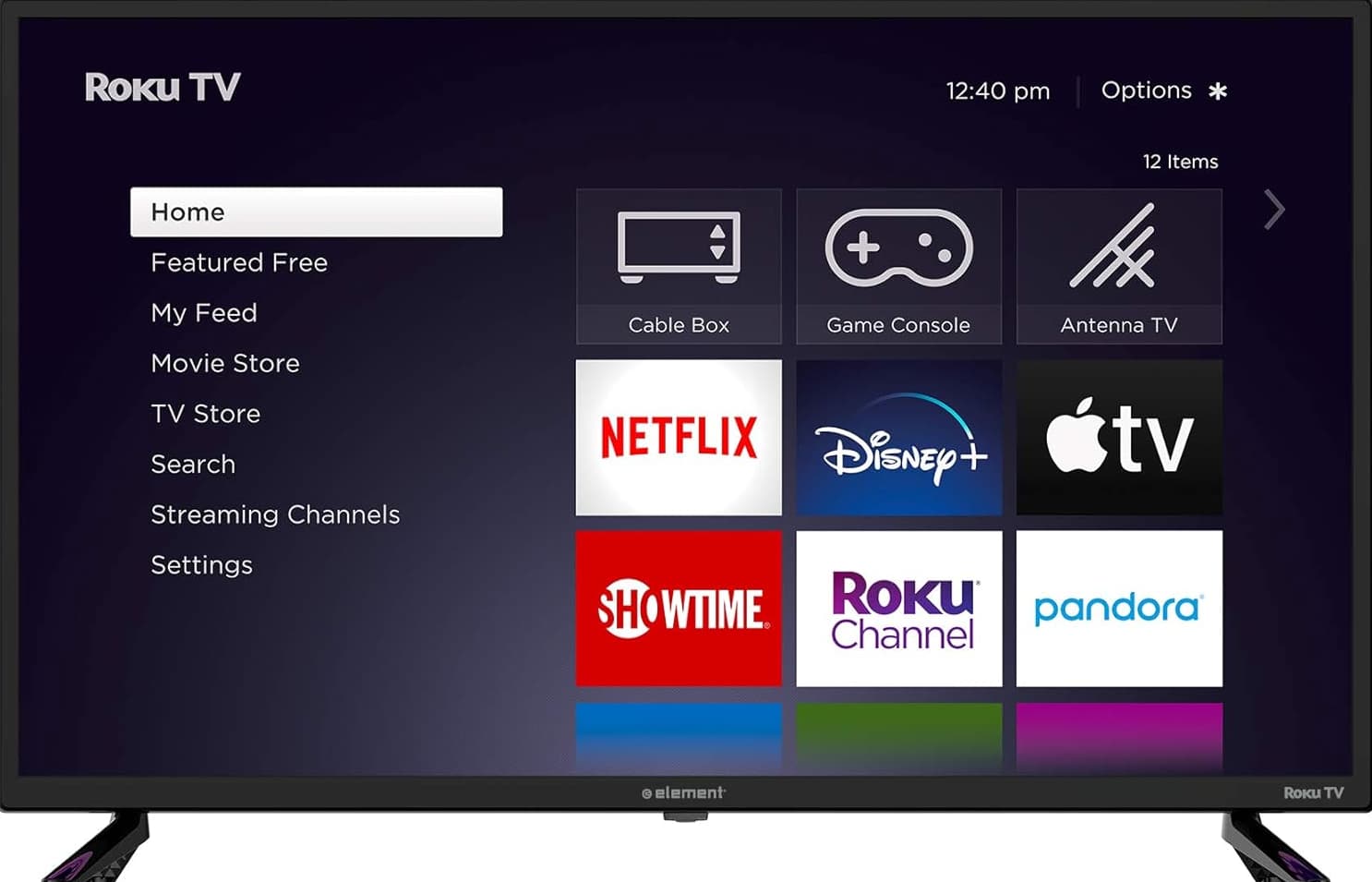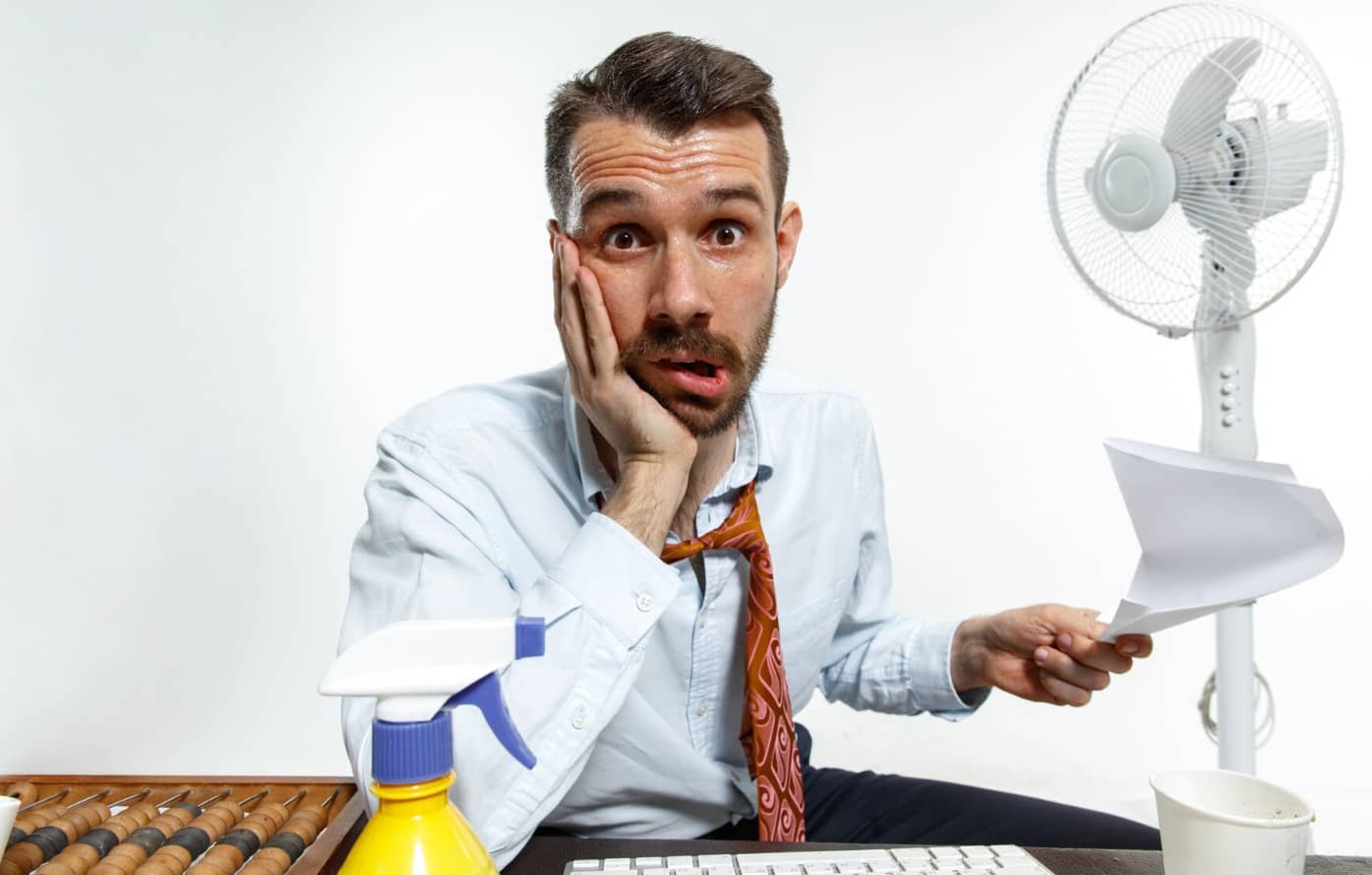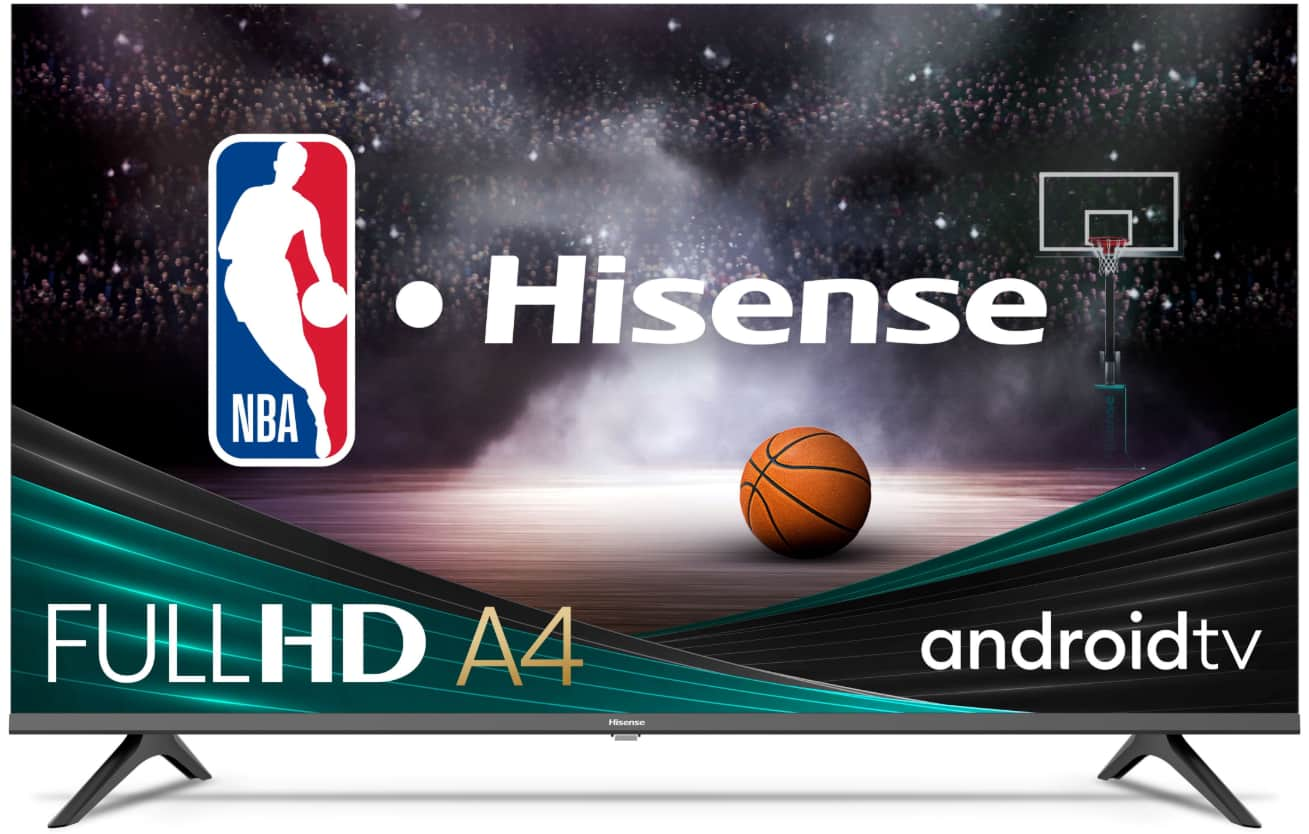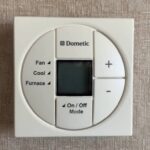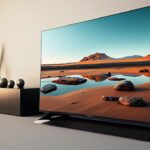Are you having trouble with your Olevia TV? Don’t worry, you’re not alone! Many Olevia TV owners face common issues that can be frustrating.
But here’s the good news: most of these problems have simple solutions that you can try at home.
In this guide, we’ll walk you through the most common Olevia TV problems and show you how to fix them step by step.
We’ll cover everything from TVs that won’t turn on to strange buzzing noises and remote control issues.
Our goal is to help you get your TV working again without having to call a repair person.
Olevia TV Problems

Picture Credit: Flickr.com
We’ll use simple words and explain things clearly so that even if you’re not tech-savvy, you can follow along easily.
So, let’s dive in and start fixing your Olevia TV!
Problem No. 1: TV Won’t Turn On
One of the most common and annoying problems is when your Olevia TV simply won’t turn on. You press the power button, and… nothing happens. Here’s what might be causing this and how to fix it:
Possible Causes:
- Power supply issues
- Remote control problems
- Loose connections
- Internal TV problems
Solutions to Try:
- Check the power cord:
- Make sure it’s plugged in tightly at both ends
- Look for any damage to the cord
- Test the outlet:
- Plug something else into the same outlet to see if it works
- If the outlet is dead, try a different one
- Remote control check:
- Try turning on the TV using the buttons on the TV itself
- If that works, your remote might be the problem (we’ll cover remote issues later)
- Power cycle the TV:
- Unplug the TV from the wall
- Wait for 1-2 minutes
- Plug it back in and try again
- Check internal connections:
- If you’re comfortable, open the TV and check for loose internal cables
- Warning: Only do this if you know what you’re doing and the TV is unplugged!
If none of these steps work, you might have a more serious internal problem, like a bad power supply board. In this case, it’s best to contact a professional repair service.
Problem No. 2: TV Black Screen or No Picture
Sometimes your Olevia TV might turn on, but you don’t see any pictures. The screen stays black, even though you might hear a sound. Here’s what to do:
Possible Causes:
- Wrong input source
- Loose cable connections
- Backlight failure
- Internal hardware issues
Solutions:
- Check the input source:
- Press the “Input” or “Source” button on your remote
- Make sure you’ve selected the right input for your device (HDMI 1, HDMI 2, etc.)
- Inspect all cables:
- Look at the cables connecting your TV to a cable box, game console, etc.
- Make sure they’re firmly plugged in at both ends
- Test with a different device:
- Try connecting a different device to your TV
- If it works, the problem might be with your original device, not the TV
- Check for backlight issues:
- In a dark room, shine a flashlight close to the TV screen
- If you can faintly see the image, your backlight might have failed
- Perform a factory reset:
- Find the reset option in your TV’s menu (you might need to consult the manual)
- Be aware this will erase all your settings!
If these steps don’t work, you might be dealing with a more serious hardware problem. It’s time to consider professional repair or replacement.
Problem No. 3: Olevia TV Buzzing
A buzzing or humming sound from your TV can be annoying. Here’s how to tackle this problem:
Possible Causes:
- Loose parts inside the TV
- Electrical interference
- Speaker problems
- Power supply issues
Solutions:
- Check for loose parts:
- Gently tap the sides of the TV (not the screen!)
- If the buzzing changes, something might be loose inside
- Reduce electrical interference:
- Move other electronic devices away from the TV
- Try plugging the TV into a different outlet
- Adjust TV settings:
- Lower the brightness and contrast settings
- Sometimes high settings can cause buzzing
- Check speaker connections:
- If you’re using external speakers, make sure all connections are tight
- Try disconnecting external speakers to see if the TV’s built-in speakers buzz
- Inspect the power supply:
- Listen closely to see if the buzzing is coming from the power supply area
- If so, you might need a professional to replace the power supply
Remember, if you’re not comfortable opening up your TV, it’s always safer to call a professional.
Problem No. 4: TV HDMI Port Not Working
HDMI ports are great for connecting devices like game consoles and cable boxes. But when they stop working, it can be frustrating. Here’s what to do:
Possible Causes:
- Damaged HDMI cable
- Loose connection
- Wrong input selection
- Faulty HDMI port
Solutions:
- Try a different HDMI cable:
- HDMI cables can go bad over time
- Use a cable you know works with another device
- Check the connection:
- Unplug the HDMI cable and plug it back in firmly
- Do this at both the TV end and the device end
- Select the right input:
- Make sure you’ve chosen the correct HDMI input on your TV
- Your TV might have multiple HDMI ports (HDMI 1, HDMI 2, etc.)
- Test with another device:
- Try connecting a different device to the same HDMI port
- If it works, the problem might be with your original device
- Try a different HDMI port:
- If your TV has multiple HDMI ports, try a different one
- If one port works and another doesn’t, you might have a faulty port
- Update your TV’s firmware:
- Check the Olevia website for any available updates
- Follow their instructions to update your TV
If none of these steps work, you might have a hardware problem with the HDMI port itself. This usually requires professional repair.
Problem No. 5: TV Power Issue
Power problems can cause all sorts of weird behavior in your Olevia TV. Here’s how to tackle them:
Possible Causes:
- Faulty power cord
- Bad power outlet
- Internal power supply problems
- Surge damage
Solutions:
- Inspect the power cord:
- Look for any visible damage or fraying
- Make sure it’s plugged in securely at both ends
- Test the power outlet:
- Plug another device into the same outlet to see if it works
- Try plugging the TV into a different outlet
- Use a surge protector:
- This can help protect your TV from power surges
- Make sure the surge protector itself is working properly
- Check for overheating:
- Feel if the TV is unusually hot
- Make sure there’s plenty of airflow around the TV
- Look for blinking lights:
- Some TVs have diagnostic lights that blink in certain patterns
- Check your manual to see what these patterns mean
- Perform a power cycle:
- Unplug the TV for at least 1 minute
- Plug it back in and try turning it on
If you’ve tried all these steps and still have power issues, there might be a problem with the internal power supply. This usually requires professional repair.
Problem No. 6: TV Keeps Shutting Off
It’s super annoying when your TV keeps turning itself off. Here’s how to fix this common problem:
Possible Causes:
- A sleep timer is on
- Power-saving features activated
- Overheating
- Loose power connection
- Internal component failure
Solutions:
- Check the sleep timer:
- Look in your TV’s settings menu for a sleep timer option
- Make sure it’s turned off
- Disable power-saving features:
- Some TVs have eco-modes that can cause unexpected shutdowns
- Turn these off in your TV’s settings
- Prevent overheating:
- Make sure your TV has good airflow around it
- Clean any dust from the vents
- Secure power connections:
- Check that the power cord is firmly plugged in at both ends
- Look for any damage to the cord
- Update TV firmware:
- Check the Olevia website for any available updates
- Follow their instructions to update your TV
- Perform a factory reset:
- This can sometimes fix software glitches
- Be aware this will erase all your settings!
If your TV still keeps shutting off after trying these steps, you might have a more serious hardware problem. It’s time to consider professional repair.
Problem No. 7: TV Has No Signal
Seeing a “No Signal” message on your Olevia TV can be frustrating. Here’s how to fix it:
Possible Causes:
- The wrong input source selected
- Loose cable connections
- A faulty cable or satellite box
- Antenna issues (for over-the-air TV)
- Bad TV tuner
Solutions:
- Check the input source:
- Press the “Input” or “Source” button on your remote
- Make sure you’ve selected the right input for your device
- Inspect all cables:
- Look at the cables connecting your TV to a cable box, game console, etc.
- Make sure they’re firmly plugged in at both ends
- Restart your cable or satellite box:
- Unplug the box for 30 seconds, then plug it back in
- Wait for it to fully reboot before checking the TV
- Check antenna connections:
- If you’re using an antenna, make sure it’s connected properly
- Try adjusting the antenna position
- Perform a channel scan:
- Go to your TV’s menu and look for a “Channel Scan” or “Auto Program” option
- Run this to make sure your TV is picking up all available channels
- Test with a different device:
- Try connecting a different device to your TV
- If it works, the problem might be with your original device, not the TV
If none of these steps work, you might have a problem with your TV’s tuner. This usually requires professional repair.
Problem No. 8: TV Has No Sound
Picture but no sound? Don’t worry, this is a common problem with several possible fixes:
Possible Causes:
- Volume is muted or too low
- Wrong audio output selected
- Loose cable connections
- Software glitch
- Faulty speakers
Solutions:
- Check the volume:
- Make sure the TV isn’t muted
- Try turning up the volume using both the TV buttons and the remote
- Verify audio settings:
- Go to your TV’s audio settings menu
- Make sure the correct speakers or audio output is selected
- Inspect cable connections:
- If you’re using external speakers, check all audio cable connections
- For HDMI devices, make sure the HDMI cable is securely connected
- Try different inputs:
- Switch to a different input (like a TV tuner if you were on HDMI)
- If you get sound on one input but not another, the problem might be with the device, not the TV
- Perform a soft reset:
- Unplug your TV for 1-2 minutes, then plug it back in
- This can often fix minor software glitches
- Check for headphones:
- Make sure headphones aren’t plugged in (this often mutes the main speakers)
- Test internal speakers:
- If you’re using external speakers, try switching to the TV’s built-in speakers
- This can help you determine if the problem is with the TV or the external audio system
If you’ve tried all these steps and still don’t have sound, you might have a hardware problem with your TV’s audio system. It’s time to consider professional repair.
Problem No. 9: Remote Not Working
A non-responsive remote can make using your Olevia TV a real pain. Here’s how to get it working again:
Possible Causes:
- Dead or weak batteries
- Obstructed sensor
- Damaged remote
- TV sensor problems
Solutions:
- Replace the batteries:
- This is the most common fix! Try fresh batteries.
- Check for obstructions:
- Make sure nothing is blocking the sensor on the TV
- Clean the front of the remote (especially the IR emitter)
- Test the remote:
- Point your phone camera at the remote’s IR emitter
- Press the buttons on the remote. You should see the IR light flash in the camera view.
- Reset the remote:
- Remove the batteries
- Press every button on the remote once
- Put the batteries back in
- Check the TV’s sensor:
- Look for a small dark “window” on the front of the TV
- Make sure it’s not covered or dirty
- Try a universal remote:
- If you have one, program it for your Olevia TV
- If it works, your original remote might be broken
- Use the TV’s buttons:
- As a last resort, you can usually control basic functions with buttons on the TV itself
If none of these steps work, you might need to replace your remote. Check if Olevia still offers replacement remotes for your model, or consider a universal remote.
Problem No. 10: TV Won’t Turn On Blue Light Flashes
If your Olevia TV won’t turn on but you see a flashing blue light, it’s trying to tell you something. Here’s what to do:
Possible Causes:
- Power supply issues
- Internal hardware failure
- Software glitch
Solutions:
- Count the flashes:
- The number of flashes often indicates a specific problem
- Check your TV’s manual to decode the meaning
- Perform a power cycle:
- Unplug the TV for at least 1 minute
- Plug it back in and try turning it on
- Check power connections:
- Make sure the power cord is securely plugged in
- Try a different power outlet
- Look for visible damage:
- Check for any signs of physical damage to the TV
- Listen for unusual sounds when you try to turn it on
- Try a “hard reset”:
- Unplug the TV
- Hold down the power button on the TV itself for 30 seconds
- Plug the TV back in and try turning it on
- Check for overheating:
- Feel if the TV is unusually hot
- Make sure there’s plenty of airflow around the TV
If the blue light keeps flashing after trying these steps, you’re likely dealing with a serious internal hardware problem. It’s time to contact a professional repair service or consider replacing the TV.
FAQs:
Here are some common questions about Olevia TV problems:
- Q: Does Olevia TV have a reset button?
A: Olevia TVs usually don’t have a dedicated reset button. Instead, you can use the power button for a reset. Turn off the TV, then press and hold the power button (usually on the front right side) for about 10 seconds.
- Q: How do I use HDMI on my Olevia TV?
A: To use HDMI:
- Connect one end of the HDMI cable to your device (like a DVD player)
- Connect the other end to an “HDMI In” port on your TV
- Turn on your TV and press the “Input” or “Source” button
- Select the HDMI input you used (HDMI 1, HDMI 2, etc.)
- Q: Where is the TV remote sensor located?
A: On most Olevia TVs, the remote sensor is located on the lower front of the TV, usually near the bottom edge of the screen. It often looks like a small dark “window.”
- Q: How can I improve my TV’s picture quality?
A: Try these steps:
- Adjust brightness and contrast settings
- Make sure you’re using the best available connection (HDMI is usually best)
- Sit at the right distance from the TV (about 1.5 to 2.5 times the diagonal screen size)
- Clean the screen gently with a microfiber cloth
- Q: My TV turns on but shows a distorted image. What should I do?
A: Try these steps:
- Check all cable connections
- Try a different input source
- Perform a factory reset (warning: this erases all settings!)
- If the problem persists, you might have a hardware issue needing professional repair
More TV Guides:
- How to Pair Insignia Remote to TV
- Vizio TV Power Light Blinking
- How To Factory Reset Samsung TV With and Without Remote
- How to Get Disney Plus on Toshiba Smart TV
Wrap Up:
We’ve covered the most common Olevia TV problems and their solutions.
From power issues to sound problems, and from remote control troubles to HDMI port failures, you now have a toolkit of troubleshooting steps to try.
Remember, many TV issues can be solved with simple fixes like checking connections, adjusting settings, or performing a power cycle.
However, if you’ve tried these solutions and your TV still isn’t working properly, it might be time to consult a professional repair service.
By following this guide, you can often save time and money by solving problems yourself.
Keep this guide handy for future reference, and happy watching!

